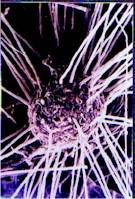Yeah, I was providing examples of edible mushrooms that grow on dead or decaying trees.
But I'm confused as to why it's relevant? They are different type of fungi than those which grow in 'bulk substrate' like h.manure, etc (ex. P.cubensis). I guess my point is those types fungi would not 'grow' (or grow so poorly it wouldn't be worth it) in soil or media (ex. promix).
I'm not talking about indoor, although I did say medium. All my pictures are from outdoors.
Oh. Where do you live? I ask becuse only ceratin areas of hte country can support outdoor Psilocybe spp. growth (ex. P.mexicana or P.cubensis).
About the pics, they are yours? I thought they were RR's, or someone else form the shroomery. I could have sworn I've seen those pics before...guess not.
I'm much more interested in growing cannabis and mushrooms outdoors, though some of my plants are in pots and not in the soil, in which case it is a medium.
Cool.
It's going to take me a day to read through all your posts, but lots of good information! I have a bunch of questions already and have only been through the first page, guess that happens when you get in a thread this late.
Fire away with your Qs!









 kind regards from guineapig
kind regards from guineapig 